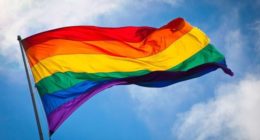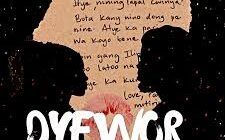By Alex Roberts
Simply put, there just isn’t enough recognition out there for members of East Africa’s creative sector; and while international photographers seem to be hired at will, flown in and out to cover a story in the region, before jetting back in to gather up awards, there isn’t much love shown to the image takers from within EA.
This is something that needs to change and has long been a gross oversight within the industry. To express it mildly, the talented need to be given their due. The East African Photography Award is attempting to change the narrative, getting recognition, and through it, further opportunities for the photographers of East Africa.
So what impact can the award really have? The EA Scene caught up with the Uganda Press Photo Award, which organizes the EAPA, to learn a bit more.
What kind of impact the photography Award has had on past winners as well as those who have applied and tried to win the award. More recognition or furthering connection to photographers?
Our goal from the beginning has always been to spotlight and foster homegrown talent. We started in 2012 with the Uganda Press Photo Award, then the Young Photographer Award and then in 2018, we decided to expand to the East African Photography Award.
The reason for the expansion was to showcase some of the talents within the region so that those out there who might be shopping for a photographer to cover stories within the region can consider looking for storytellers from the region instead of flying in Western photographers.
Each year we work hard on inviting a varied and balanced jury. This year we have Yasuyoshi Chiba from AFP, Paul Boates from Mail and Guardian or Mallory Benedict from National Geographic – that in itself gives great exposure to those who participate.
Furthermore, through inviting the winners to Kampala to participate in our yearly (pre-Covid) programme around the winners exhibitions, we hope to build a network and platform in the region. We believe that exchange and getting to know each other and each others’ work is a very important element of growth and appreciation of local talent.
Finally we hope that some healthy competition might push the photographers in the region to be better at their craft and hopefully achieve more for themselves as they go.
The impact; you’d have to talk to the photographers and maybe they’ll tell you how it has impacted them directly. For our part, we do our best to bang the drum for the winners, we engage a lot on social media and sometimes our noise reaches relevant online publications like The Eye of Photography, The Guardian or CNN. We also have some of our regional partners help spread the word including the Friedrich Ebert Stiftung, Foreign Correspondents’ Association of Uganda and in conjunction Foreign Correspondents’ Association of East Africa, British Council or EU Delegation in Uganda. Media-wise, we partner with ZAM Magazine or African Arguments and in terms of equipment and training support we are happy to work with Canon Central and North Africa.
At the grassroots, we’ve seen people start to appreciate more African photographers, photographers more like them who share the same stories. People self taught just like them, who have had to work in unconventional ways to make it to the top. That does a lot for the psych of emerging talents especially if everywhere you look you see people who have degrees in photography from western universities. In Uganda for example, in most major universities the most photography learning you’re going to get is a course unit in the journalism class.
In terms of the themes of work we see, is there a lack of restriction within format like the EAPA as opposed to like print. Does this give a platform for more freedom of expression for those that compete?
Oh yeah. We’ve had some purely journalistic submissions that wouldn’t be given that kind of space in the wires. At most you get a couple of pictures selected by the agency you’re freelancing for to be used for either print or digital and that’s it. With the award and following exhibition, you get to showcase a fuller narrative for example stories like 2018’s submission ‘A Spectacular Failure’ by Thomas Mukoya about a fire in a Kenyan Slum and last year’s submission ‘Ethiopian Airline Crush’ by Maheder Tadese and Daniel Irungu’s ‘Nairobi Kenya Attack’.
And then there are those stories that you’d probably never see anywhere else like Badru Katumba’s personal project ‘No Jokin with Faith’ about Catholic pilgrim’s trekking for the June 3rd Uganda Martyrs’ Day. Here’s a talented self driven photographer who did this story out of his own interest and this was the first time he could see it in exhibition form.
Or 2019’s winner ‘Sifrash’s Story’ by Martha Tadesse, another personal project born of commissioned work.
Also print is limiting and accessible to only a few, whereas the EAPA is very open and we welcome submissions from everyone.
Do you think there has been historically a lack of recognition for photographers within the region. Why do you think that is? How do you think it’s come about? What do you think is the path forward to change that and get photographers more recognition?
UPPA, YPA and EAPA are the first photography competitions of their kind, not only within the region but Africa. Yes, there have been competitions open to Africans but the deck is already so stacked against us and it would take a while for us to get a seat at the table. On the bright side, things are starting to charge and while it has taken a while for photographers of color to be considered, an Ethiopian, Mulugeta Ayene, got shortlisted for the World Press Photo and Story of the Year.
Previously there was a lack of information about available photographers or organisations that were hiring didn’t care to do the search but now there’s a shift. We have had people reach out to us for recommendations about photographers and we try to share as much information as possible about how to find photographers and where to review their work. And now there are endeavours like the African Photojournalism Database which is a partnership project between Everyday Africa and World Press Photo; as well as Visura which now has a map for locating photographers from any region.
With regard to competitions we’d have to look at who is judging these competitions. How are they judging? Do they put consideration towards the context of the image? Are they purely aesthetic? For all our talk about truth in photography, there is always a bit of subjectivity involved. That’s why we created ours. Instead of money we award gear that we thing is important. We direct many of our resources towards capacity building. The winners get award quality gear that for some is too expensive to acquire. For EAPA we facilitate the winners to join us in Kampala for what we call the “Professionals’ Week”. This kicks off with the exhibition opening followed by activities like the portfolio review that is free and open to all interested photographers, panel discussions, workshops and sometimes photographers’ talks. All gear towards enhancing their craft and a sharing of perspectives.
We also try to do our bit through who we partner with. One of the main issues we’ve noticed with photographers in Uganda and the region is lack of structured visibility. Which is why we decided to partner with Visura, a platform for visual storytellers. Through the partnership past winners and runners-up get access to the platform which media commissioners and buyers have access to. For now they get sponsored access courtesy of Visura but the platform overall is cheaper than most and easy to operate. And they provide website access as well.
Ultimately, the tide is slowly shifting and we’re happy to do our part however big or small.
Do you think photographers in the region are passed over for foreigners? Is this an avenue to help change that narrative?
Definitely they’re passed on for foreigners with many an excuse. From not knowing where to look, to a distrust for their proficiency and professionalism and so on. And then when they do hire them sometimes they’re low-balled. And while it isn’t our mandate to fight every battle for the photographers, through our activities we have tried to equip photographers with as much information as we can so they can better navigate the industry.
And yes, by highlighting these photographers every year we are saying, hey maybe hire this guy in Tanzania instead of flying someone else in. Or hey, maybe instead of another generic stock image you can look at what these photographers are doing on the ground in real time.
The deadline for submissions is August 1st, 2020.
Keep your ears and eyes on the EA Scene for more info, details and highlights around the East African Photography Award within the coming weeks!
All submissions must be done online through the contest’s Visura link. More guidelines, terms and conditions can be found there as well.
Please contact info@ugandapressphoto.org if you have any further questions.










